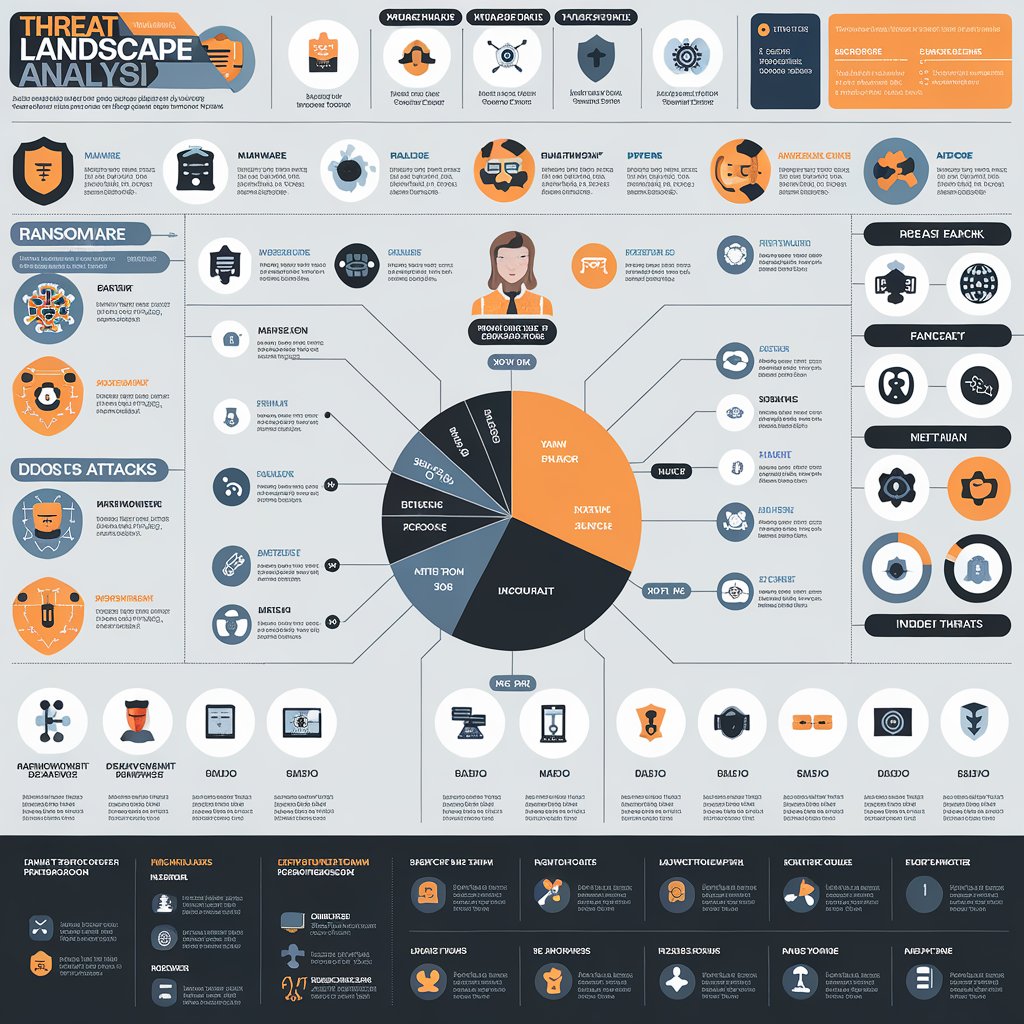UA
5 Min Read
1. What Is Threat Landscape Analysis?
Threat landscape analysis is the process of identifying, assessing, and categorizing cybersecurity threats that an organization or industry faces. This analysis helps in understanding potential risks, vulnerabilities, and the likelihood of attacks to prioritize security measures effectively.
2. Components of Threat Landscape Analysis
a. Threat Actors
Cybercriminals: Motivated by financial gain, targeting organizations through ransomware, phishing, and fraud.
Nation-State Actors: Highly skilled attackers with geopolitical motives, often targeting critical infrastructure and sensitive data.
Hacktivists: Individuals or groups with ideological motives, conducting defacements, DDoS attacks, or data leaks.
Insiders: Employees or partners who misuse their access for malicious purposes, either intentionally or inadvertently.
b. Attack Vectors
Phishing and Social Engineering: Exploiting human behavior to gain unauthorized access.
Malware: Includes ransomware, spyware, and viruses designed to disrupt, steal, or corrupt data.
Zero-Day Exploits: Attacks leveraging unknown vulnerabilities in software or hardware.
Distributed Denial of Service (DDoS): Overwhelming systems with traffic to disrupt operations.
Advanced Persistent Threats (APTs): Long-term targeted attacks to gain persistent access to sensitive data.
c. Vulnerabilities
Unpatched Software: Outdated systems and applications that are susceptible to exploitation.
Weak Authentication: Inadequate access controls, including poor password hygiene and lack of MFA.
Supply Chain Weaknesses: Vulnerabilities introduced through third-party vendors and partners.
Cloud Misconfigurations: Improperly configured cloud environments exposing data and systems.
3. Trends in the Threat Landscape (2024)
a. Increased Ransomware Sophistication
Ransomware-as-a-Service (RaaS) platforms are enabling less skilled attackers to execute highly effective ransomware campaigns. Double extortion, where attackers steal data before encrypting it, is on the rise.
b. Rise of AI-Powered Threats
Cybercriminals are leveraging AI to automate phishing, enhance malware capabilities, and evade detection systems. AI is also used to exploit vulnerabilities at unprecedented speed.
c. Supply Chain Attacks
As organizations rely on third-party vendors, supply chain attacks are becoming a significant concern. Examples include attacks on software providers and managed service providers (MSPs).
d. Targeting Remote Work Environments
Remote and hybrid work setups have increased the attack surface, with cybercriminals exploiting unsecured home networks and devices.
e. IoT and Operational Technology (OT) Threats
The proliferation of IoT devices and their integration into critical infrastructure has introduced new vulnerabilities, making them a lucrative target for attackers.
4. Conducting a Threat Landscape Analysis
Step 1: Data Collection
Gather intelligence from threat reports, security forums, and open-source intelligence (OSINT).
Leverage threat intelligence platforms to monitor emerging threats.
Step 2: Threat Categorization
Classify threats based on their potential impact, likelihood, and the assets they target.
Use frameworks like MITRE ATT&CK to identify attack techniques and tactics.
Step 3: Risk Assessment
Evaluate the risk each threat poses by analyzing vulnerabilities and the organization’s preparedness.
Prioritize risks based on business impact.
Step 4: Monitoring and Review
Continuously monitor the threat landscape for changes.
Update the threat analysis regularly to reflect new vulnerabilities and emerging attack methods.
5. Strategies to Address Emerging Threats
a. Proactive Threat Detection
Deploy advanced threat detection systems, such as Security Information and Event Management (SIEM) and Endpoint Detection and Response (EDR).
Use threat hunting techniques to identify hidden risks.
b. Strengthen Defenses
Implement Zero Trust Architecture (ZTA) to minimize implicit trust within the network.
Regularly patch software and update systems to eliminate known vulnerabilities.
c. Enhance Employee Training
Conduct regular cybersecurity awareness training to prevent phishing and social engineering attacks.
Simulate attack scenarios to improve preparedness.
d. Collaborate on Threat Intelligence
Participate in threat intelligence sharing with industry peers and government agencies.
Leverage community resources, such as ISACs (Information Sharing and Analysis Centers).
e. Incident Response Planning
Develop and test a comprehensive incident response plan.
Include ransomware recovery protocols and strategies to mitigate data breaches.
6. Tools for Threat Landscape Analysis
Threat Intelligence Platforms: Recorded Future, Anomali, or ThreatConnect.
Vulnerability Management Tools: Qualys, Nessus, or Rapid7.
Endpoint Security Solutions: CrowdStrike, SentinelOne, or Symantec.
Network Monitoring Tools: Splunk, SolarWinds, or Wireshark.
7. Conclusion
The cybersecurity threat landscape is constantly evolving, requiring organizations to stay vigilant and proactive. A thorough threat landscape analysis enables businesses to identify risks, prioritize defenses, and adapt to emerging challenges. By understanding the nature of threats and implementing robust strategies, organizations can significantly reduce their exposure to cyberattacks and build a resilient security posture. audit3aa
Join our newsletter list
Sign up to get the most recent blog articles in your email every week.
You can copy our materials only after making sure that your services are safe.
This site is protected by reCAPTCHA and the Google Privacy Policy and Terms of Service apply.










